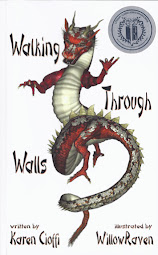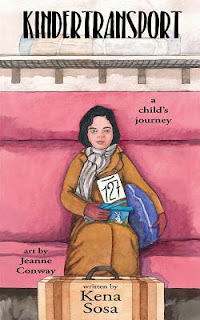Contributed by Karen Cioffi, Children's Writer
A while ago, I was asked to look over a children’s fiction picture book manuscript. This was not a paying job, just a favor.
The ‘new to writing’ authors, who are both health care professionals, had already been calling major publishers to find out submission requirements. They were told their manuscript would not be looked at without an agent.
So, they went to the library to find a book on top agents.
While this is a worthy endeavor, there are some basic first steps to take before shooting for the stars.
Just glancing at the manuscript, I knew it needed a lot of work. And interestingly, I was surprised to see so many errors in a simple 600-word story.
It seems as we progress in learning the craft of writing, we forget that we didn’t know the very basics at one time either.
So then, I had to figure out what to say to the authors without alienating them or totally discouraging them.
When critiquing or giving writing advice, it’s important to begin with the positive aspects of the manuscript. If the errors are basic and there are a lot of them, you may also want to state them in generic terms, not to offend the author/s.
What does this mean?
Well, it’s not a good idea to say, “You shouldn’t have the children’s picture book manuscript formatted in lists, numbered, or in Australian Sunrise 10pt font.”
Instead, you might say, “Manuscripts are usually preferred typed in New Times Roman 12pt font, and are double spaced using a free form flow with the first sentence of each paragraph indented.
See the difference?
To help with clarity, you could include a first page example of a manuscript you have, or rewrite the 1st paragraph of the authors’ manuscript.
If there are just too many errors, for time’s sake you can make a list of proper manuscript formatting tips. This is the approach I took.
I started out with the ‘positive:’
This is a wonderful idea for a children’s book and has great potential, especially that both of you are professionals in the health field. Children will certainly benefit from the story’s information. It could use some tweaking, though.
Then I added the following:
Here are a few tips for writing and formatting a manuscript to help get it submission ready:
• Manuscripts should be formatted in 12 pt Times New Roman Font
• They should be double spaced
• They should be in free form without numbering for pages or in list form
• The first sentence of each paragraph should be indented
• Children love action – actions are better shown through ‘showing’ rather than ‘telling’
• Notes for illustrations after each of your intended pages are usually frowned upon by publishers
• Most publishers, especially the major ones use their own illustrators
• Manuscripts are more likely to make it past the slush pile if they are polished
• Usually writers go through a process of one or two critique groups and writing groups. After rewrites and editing it gets to a point where it looks perfect. That’s when it needs to be professionally edited.
These tips are part of the advice I offered the authors and I kept it as generic as possible.
After you note the manuscript errors, you should end your advice on another positive note. You might say, “With rewriting and editing, you will have an engaging story that children will be sure to love, and it’ll be submission ready.”
I then provided several writing links about writing for children and editing.
Since every author’s personality is different it’s usually best to use the gentle approach when offering writing advice.
ABOUT THE AUTHOR
Karen Cioffi is an award-winning children’s author and children’s ghostwriter, rewriter, and coach with clients worldwide. She is also the founder and editor-in-chief of Writers on the Move and an author online platform instructor with WOW! Women on Writing.
Karen’s children’s books include “Walking Through Walls” and “The Case of the Stranded Bear.” She also has a DIY book, “How to Write Children’s Fiction Books.” You can check them out at: https://karencioffiwritingforchildren.com/karens-books/. If you need help with your children’s story, visit: https://karencioffiwritingforchildren.com.



























